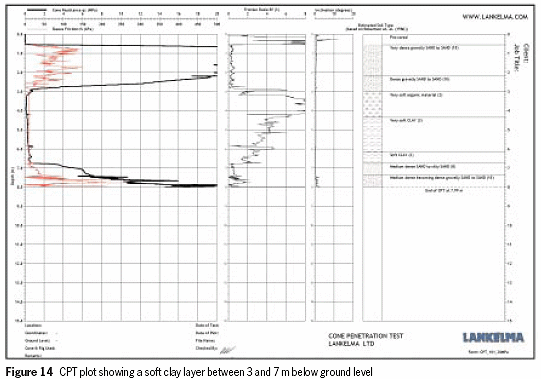Chapter 3
Piezocone
Pre-drilling (b)
| PRE-DRILLING (b) 3.3 When penetrating coarse materials, pre-drilling may be used in parts of the profile if the penetration stops in dense, coarse or stone-rich layers. Pre-drilling may be used in coarse top layers, sometimes in combination with casings to avoid collapse of the borehole. In soft or loose soils, pre-drilling should be used through the crust down to the groundwater table. The pre-drilled hole should be filled with water if the pore pressure will be measured by a water-saturated system. If the groundwater table is located at great depth, the pore pressure system should be saturated with glycerine or silicone oil. An example plot is shown in Figure 14. For constructing a concrete rafter for the foundation of a new building, the settlement of the soft clay layer between 3 and 7 m below ground level had to be determined. Therefore a dissipation test was made in the clay layer. Since the chosen filter location was U1 (face), pre-drilling of the top layer of dense sand was necessary. A filter location of U2 (shoulder) is less vulnerable, but sometimes produces a negative pore pressure at the start of dissipation and therefore the test takes much longer. |

